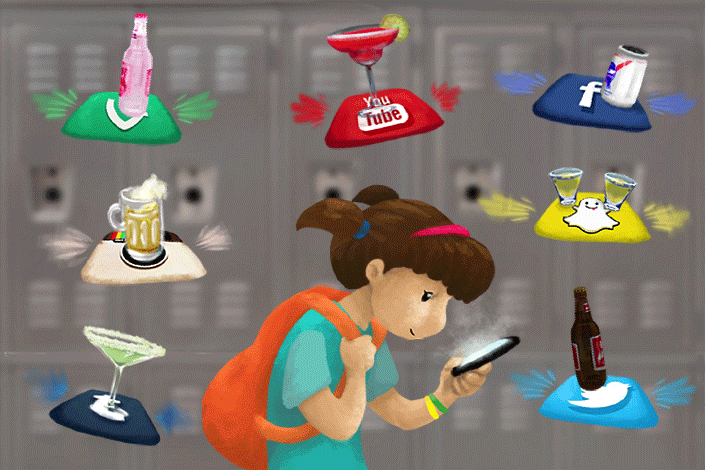Alcohol ads are targeting youth through social media, study says

Image: Academic Affairs Communications, Research Communications and Public Relations
Youngsters are being targeted with alcohol-related advertisements on social media platforms, new research demonstrates.
Adam Barry, an associate professor in the Department of Health and Kinesiology, contends that youth – as young as 13 – have unrestricted access to alcohol advertising on social media platforms. Despite regulations designed to limit advertising to youth, alcohol brands were found to send alcohol advertisements directly to underage profiles on social media platforms, such as Instagram.
Due to a lack of published studies on the topic, Barry was curious about the direct engagement of today’s youth with different alcohol brands.
“We wanted to see if an underage profile could view alcohol brand content and interact with that content directly from smartphones,” Barry said.
According to Barry, alcohol brands are supposed to have an Age Gate system in place that restricts those under the minimum legal drinking age of 21 years from accessing and viewing their content. However, focusing specifically on Twitter and Instagram, he discovered that underage profiles had unfettered access to alcohol brand promotional pictures, videos and messages.
“We made 10 fictitious profiles of various ages representing middle school, high school, and college students, to see if we could engage in their advertising,” Barry said.
Barry then examined access among these profiles to 22 different alcohol brands, all of which have been identified as brands adolescents consume most often.
“What we found is that on both sites, Twitter and Instagram, all underage profiles could view and completely interact with all posted alcohol content, like the content, and share posts with other profiles, such as retweeting. The Age Gate would only activate on Twitter if the user attempted to voluntarily follow an alcohol company. For Instagram, all underage profiles could follow every brand and ultimately receive promotional material directly to their smartphones.”
By the end of the 30-day study, Barry said that his 10 media accounts had received hundreds of advertisements.
“What we found was pretty staggering,” Barry said. “This shows us that the industry is violating their self-regulated advertising policies for social media. It also means that we may not have an accurate estimate of the exposure youth have to alcohol advertising. This is important because exposure impacts whether someone will start drinking and the quantity consumed if they are already a drinker.”

